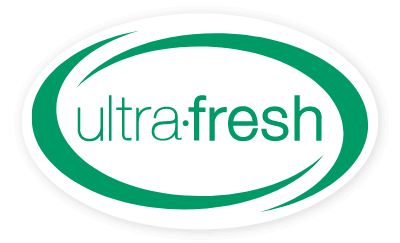Comfort, fluffiness, and support. Pillows offer us so much to love! But, if you don’t take care of your pillow, they won’t take care of you!
Yet, like most of us, we avoid cleaning our pillows out of sheer trouble. Not being as simple as throwing a t-shirt into the wash, pillows require some planning, especially with a top-loading washer (we’ll mention more of that later).
But if you want to be a master of cleanliness, you’re gonna have to learn how to wash your pillow sooner than later.
So instead of putting it off any further, let’s go through why our pillows need to be washed more than you think, as well as the best way to clean your pillow to keep your sinus and sleeps all the better off for it!
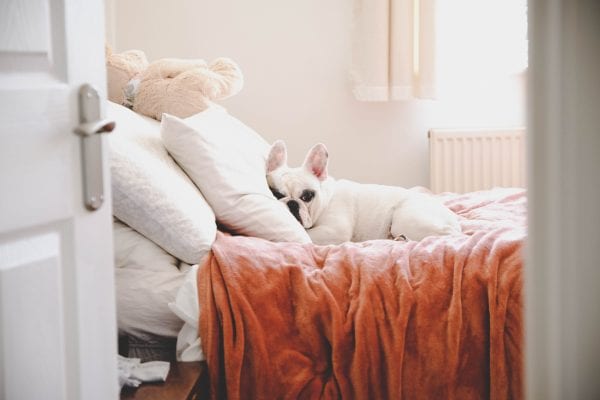
The Problem with a Dirty Pillow
The average human will spend about 26 years of their life sleeping and 7 years trying to get to sleep. This is probably why so many of us strive to find the perfect mattress and pillow to support our lethargic bodies.
With that being said, there are few time-investing measures to ensure that our pillows are at their best. Spending night after night absorbing sweat, oil, dead skin, dirt, and drool, pillows can quickly become packed to the brim in a microbial nightmare.
While you’ll probably not notice issues with a dirty pillow immediately, problems such as acne, allergic responses, lack of sleep, and dust mite accumulation can creep up on you quickly.
In fact, on average, humans shed around 500 million skin cells a day or 9 lbs a year. That is more than enough food to sustain a million dust mites within your bed. Terrible for those of us with over-active allergies!
[caption id="attachment_2584" align="aligncenter" width="800"]

Dust mites: What they are and how to prevent them
And we haven’t even touched upon the fungal issues! A paper published in Allergy looked at 10 pillows aged between 1.5 and 20 years for what sort of fungi cultures could be discovered.
Unsurprisingly, the sweat-laden pillows grew anywhere from 4 to 16 different isolated species of fungus.
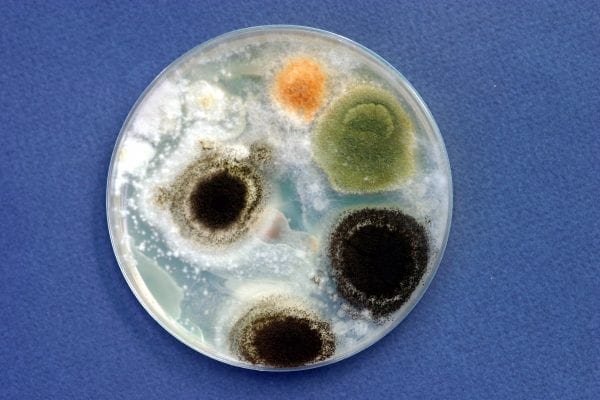
The researchers attributed the sheer variety of fungi due to the porous housing of pillows and the environment we create for them every time we sleep.
Adults produce almost 100 liters of sweat in bed each year, while our bodies warm the surrounding sheets and comforters to a balmy 30◦C. While this moisture-dense bed might sound disgusting to you, it is the perfect environment for microbes to spread.
How Often Should You Wash Your Pillow?
Cleaning your pillow doesn’t have to be a weekly affair, as long as you’re taking the right steps for protection.
On average, with a zippered pillow protector, you should be washing your cushioned-headrest at least every 3 months. If you have bad asthma, this frequency might be even shorter.
However, if you are not sporting some sort of filter between your head and pillow, then you’ll find your pillow less comfortable and clogged with grime in as short as 1 month.
You’ll get the most out of your pillow investment with regular maintenance. In doing so, pillows can last for upwards of three years before they are recommended for replacement.
Without cleaning, you can notice a significant loss in fluffiness and support and may have to potentially replace it in under 6 months.
How to Wash A Pillow:
First things first – if your pillow has a content and care label, read it! Pillows can be manufactured out of a variety of different textiles. Understandably, they would have varying instructions on how to wash them.
If you can’t find a care label, play it safe, and wash with warm water on a gentle cycle.
Just to note, some pillows that CANNOT be washed. Foam and gel-based pillows fall into this trap, and without being able to be steamed either, your only bet is to spot clean any stains and use a pillow protector to extend their usefulness.
But for all of your down and fiberfill pillows, you can make quick work cleaning them in your washing machine.
Step 1: Prep
Start by taking off any protective layers covering your pillows. You will want to wash these separately to ensure thorough cleaning and to avoid over-filling your washing machine.
Put together your mild laundry detergent, 1 cup bleach (or bleach substitute), ½ cup baking powder (or washing powder), and tennis/dryer balls.
Use liquid laundry detergent if you can, as powder versions can nestle into the fibers, resulting in a stiff and residue-filled pillow.
We also recommend to never wash pillows by themselves. Tubs in plenty of front and top-loading washing machines can become off-balance, and potentially damage themselves with how heavy pillows get when waterlogged.
If you only have one pillow to wash, balance the load by adding towels to the opposite side of your pillow. If you have more than one, evenly spread a max of two into your machine.
Step 2: Washing
After your pillows are properly distributed into your washer machine, start filling the tub with warm water and a small amount of your mild laundry detergent.
Some washers have specific input instructions for baking powder and bleach. Follow your manufacturer's instructions to ensure the best cleaning possible.
Run your pillows on your gentle cycle, or whichever setting reduces the use of your washing machine’s agitator (if it has one). Pillows can find themselves damaged by agitators, and often will get wrapped around them when not using a gentler cycle.
If your washing machine is incredibly old, you might not have the option for limited agitator use. If this is the case, you can save yourself (and your pillows) a lot of trouble by heading to a laundry mat with front-loading washers.
Step 3: Rinsing
Your washer should automatically cycle into a rinse/spin cycle for any setting that you choose. However, pillows are porous and absorbent.
To guarantee that all the suds are removed from your pillows, don’t be afraid to give one or two rounds of rinsing and spinning.
This will help keep the filling from bunching up due to detergent and avoid the possibility of a lumpy pillow.
Step 4: Drying
Drying your pillow thoroughly is incredibly important. Not doing so could fester fungi, mildew, and more.
To avoid this, we recommend skipping any automatic settings on your dryer.
Most of these “advanced” sensors will only detect the surface temperature of your pillow, leaving the internal filling damp, but warm – the perfect environment for mold and fungus.
Instead, dry 2 pillows at a time (much like with your washer, you don’t want to overload your dryer) on low heat for roughly an hour. This can be shorter or longer depending on the efficiency of your dryer and the thickness of your pillows.
Secondly, for those of you looking to preserve your comfort, try adding two dryer or tennis balls into your load.
If you plan on using tennis balls, place them inside two separate and clean white tube socks. This will help avoid spreading any loose green fibers from the tennis balls onto your pillows.
Once your pillows are completely dry, place them back into their cleaned pillow protectors and enjoy your bed in clean comfort!
For extra freshness, you can hang your pillows outside on a sunny and breezy day for a few hours.
The UV rays will help eliminate any surface cultures, while the outside air can provide pleasant scents without the need for chemical fragrances.
[caption id="attachment_5398" align="aligncenter" width="600"]
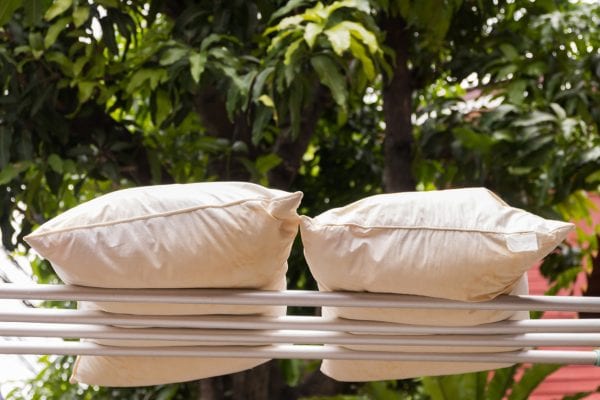
Leave pillows in the sun to help eliminate surface microbes and provide a fresh scent.
Antimicrobial Treated Pillows and Pillow Protectors
If you want your pillows to remain their freshest while getting the most of your investment, you’ll want to purchase an antimicrobial treated pillow and pillow protector.
Interested in finding out the difference between antibacterial and antimicrobial?
Antimicrobial Treated Pillows
When purchasing a pillow, it is important to note that many different components of the pillow may be treated such as foam, polyester fiberfill, feathers, and/or outside fabric.
By having these different components treated, the growth of odor-causing bacteria, mold, and mildew can be prevented, leaving you with a pillow that will stay cleaner and fresher for longer.
Recently, BioPedic pillows treated with Ultra-Fresh were mentioned in a Country Living article featuring Joanna Gaines's Best Bedroom Tips.
In addition, our partner Brooklinen has a line of Ultra-Fresh treated feather and down pillows currently listed in the top-down pillow picks for 2020 by Sleep Junkie.
[caption id="attachment_5404" align="aligncenter" width="600"]
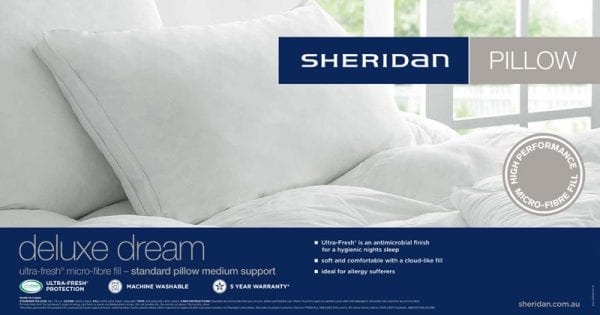
Sheridan pillow with Ultra-Fresh
Antimicrobial Treated Pillow Protectors
Often waterproof, these zippered-covers create a microbial barrier from your head to the pillow, reducing dust mites, sweat and drool absorption, and preventing stains. Since we spend so much time with our pillows, there is no real reason to not own a pillow protector.
But, how can I be sure that my pillow protector is treated with antimicrobial technology?
Just look for it in the title! Antimicrobial fabric treatments are usually applied during textile finishing processes and offer freshness protection for the user.
